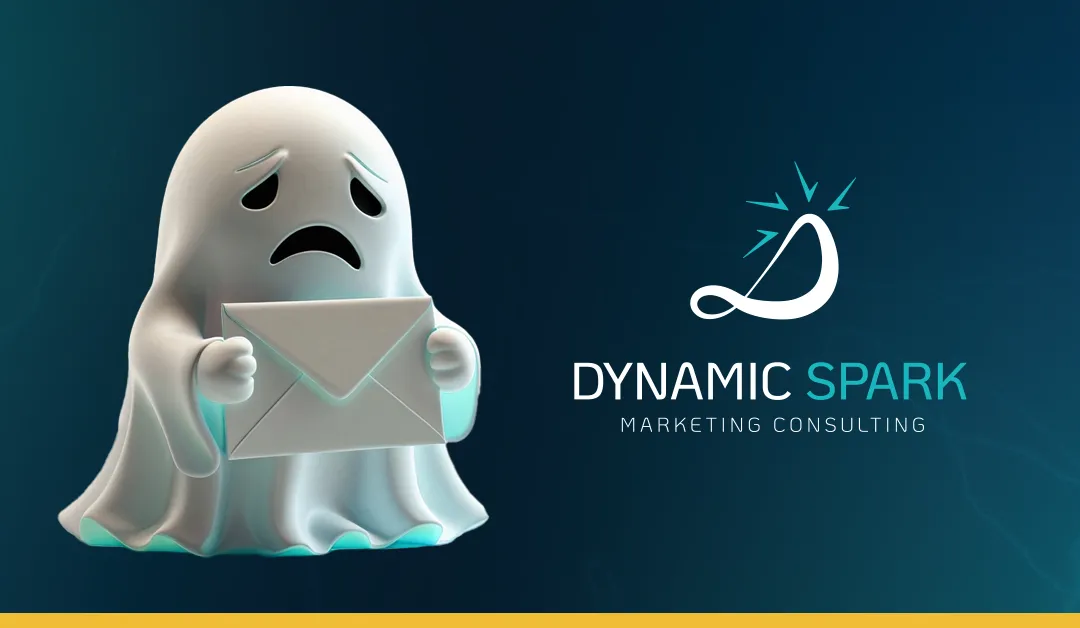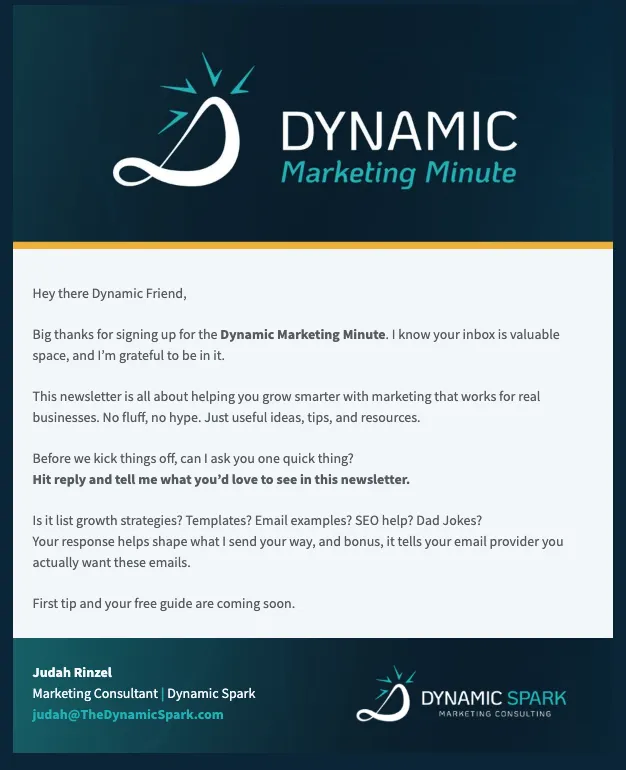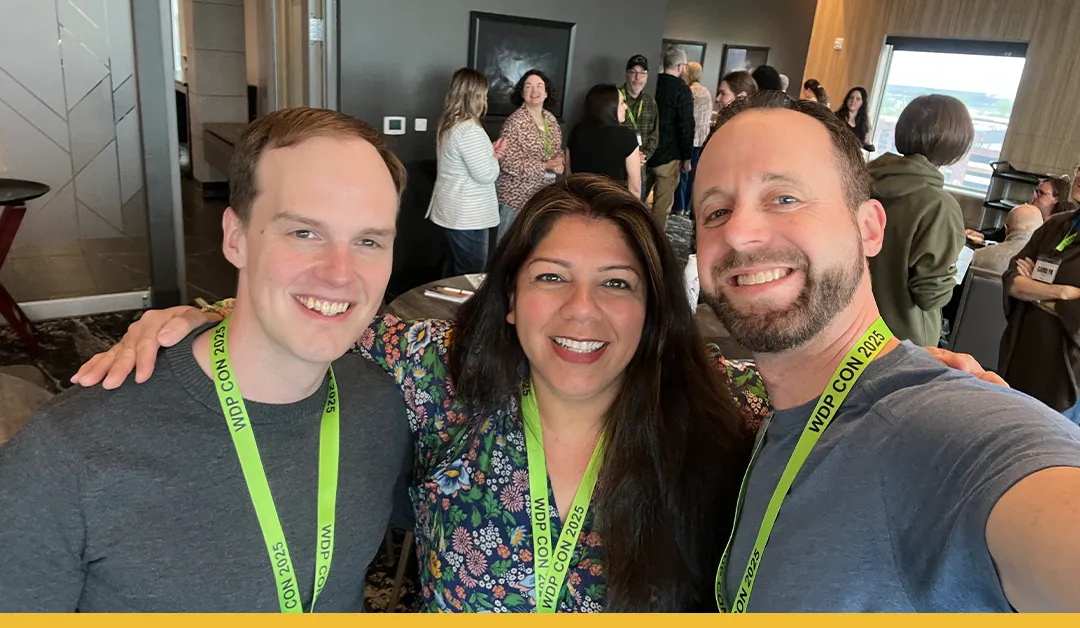
by Judah | May 30, 2025 | Business Strategy, Community & Collaboration, Digital Marketing Strategies, Entrepreneurship, Marketing, Web Design & Development
Why You Need Community to Grow a Business (No, Really)
There’s this idea that to build a successful business, you need to hustle hard, stay quiet about your “secret sauce,” and view anyone in a similar space as your competition. But after spending a weekend at the first-ever Web Designer Pro in-person conference, I can tell you: that mindset couldn’t be further from the truth.
This wasn’t just a business trip. It was a reminder of why I got into this work in the first place, and why community, collaboration, and shared experiences are essential ingredients for long-term success.
From Virtual Chats to Real-Life Conversations
I’ve been part of the Web Designer Pro community since last fall. It’s an online group built around helping web designers grow their businesses with purpose and clarity through regular trainings, Q&As, and group calls. The support is real, and the people in this group? They’re from all over the world, but many of us are working through very similar challenges.
Each week, we meet virtually, asking questions, reviewing websites, and sharing wins and pain points. It’s been one of the most consistent sources of encouragement and accountability in my business journey.
When I first found out about the group through Josh Hall’s podcast (which I discovered via Shannon Mattern’s podcast, who was also a presenter at the conference), I was already consuming every bit of marketing and business strategy content I could get my hands on. But eventually, I realized I didn’t just need knowledge. I needed connection.
What the Conference Was All About
Earlier this May, I attended the first in-person Web Designer Pro conference in Columbus, Ohio. And while I had chatted with many of the attendees virtually for months, this was our first time in the same room.
The weekend kicked off with a meetup at a Columbus Clippers game. Yes, it rained the entire time, but I was so caught up in the conversations and meeting people in real life that I didn’t even notice. We had a dry, covered box and a full evening of uninterrupted community-building.
One of the most meaningful parts of that night was finally meeting Liz (middle in the picture above), my accountability partner from the group. We both come from marketing backgrounds, and she’s now focused on becoming more of a consultant and fractional CMO (or part-time marketing leader). Meeting in person only reinforced how important it is to have someone in your corner who gets it.
The next day was packed with speaker sessions all focused on business growth. I came away with practical insights I plan to implement, including:
- Turning your email newsletter into a product your audience actually looks forward to: entertaining, useful, and good enough they might even pay for it.
- Creating a killer pitch deck that walks clients through every potential objection before they even ask.
- Structuring offers for long-term clients so you’re building recurring revenue, not just income from one-off projects.
And yes, I took an absurd number of notes and will absolutely be rewatching the recordings.
No Cliques, No Competition, Just Connection
You’d think that gathering 40+ people with nearly identical job titles in one space might feel a little.. competitive. But it was the exact opposite.
There were no cliques. No posturing. Just genuine conversation and a willingness to share strategies, lessons, and mistakes. Everyone showed up with the intention of helping each other grow. And that got me thinking: why don’t we treat “competitors” this way more often?
Since starting my business, I’ve realized that even if someone does almost exactly what you do, and lives in your same town, your business is still yours. You bring different experiences, a different network, and a different energy to the table. There’s always a way to differentiate yourself, and you never know when a “competitor” might become a collaborator or mentor.
I’ve found that getting to know others in your industry, even the ones nearby, can open doors you didn’t expect. Whether it’s sharing referrals, having someone to bounce ideas off, or just knowing you’re not the only one figuring things out, it’s worth it.
What This Means for Your Business
This wasn’t just a feel-good weekend. It was a crash course in what matters most in business: people.
Whether you’re a web designer, a consultant, or a small business owner just trying to grow your brand, your success will hinge on more than just technical skill. It’s about creating genuine experiences, surrounding yourself with a community, and being open enough to share what’s working and learn from others.
Business growth isn’t a competition. It’s a collaboration.
And if you’re building a website, launching a brand, or trying to figure out your marketing strategy, that mindset makes all the difference.
Ready to Build With Purpose?
Start by getting clear on your goals, your strategy, and what makes your business different. I’d love to help.
👉 Fill out this short website questionnaire to get started.
Let’s build something amazing, together.
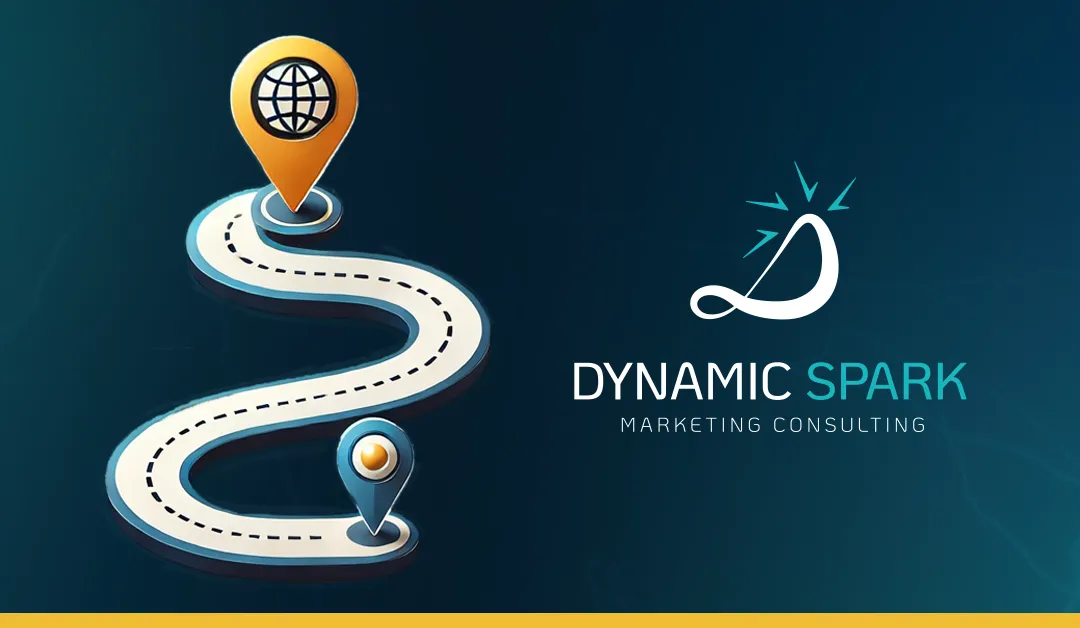
by Judah | May 29, 2025 | Email Marketing & Automation, Lead Generation & Nurturing, SEO & Online Visibility, Small Business Growth, Web Design & Development
Building a website without a growth plan is like hitting the road on a family trip with your kids with: no snacks, no entertainment, no mobile data, and of course, the check engine light flicks on halfway through hour one. You’ll get somewhere… but not without chaos, complaints, and maybe a little emotional damage.
So, What Is a Website Growth Plan?
A website growth plan is a strategic roadmap designed to grow your online presence and generate leads. It goes beyond “make it look good” and into “make it work hard.” It combines content, SEO, lead capture, email marketing, and more to align your website with your business goals (Note: If these terms are a little foreign to you, visit the Marketing & Website Terms Made Simple page).
Think of it as what Walter White was to Breaking Bad, methodical, precise, a little gritty, and highly calculated (minus the moral decay).
Here’s what a typical website growth plan might include:
-
Location-Specific SEO Pages: These help you show up when someone types “[your service] near me” and doesn’t want to scroll past Yelp.
-
Keyword Research & Organic SEO: Instead of guessing what your customers search for, we research it and bake those terms right into your content.
-
Strategic FAQs: Because if people keep asking, your site should be answering.
-
Content Marketing via Blogs: Useful, helpful, and optimized for search engines.
-
Lead Magnets: Irresistible downloads or freebies that get visitors to say, “Yeah, I’ll trade my email for that.”
-
Email Follow-Up Series: Think of this as the nurturing sequence that gently guides leads toward working with you.
-
Monthly E-Newsletter: Ongoing education that keeps your brand top of mind and helps potential customers without being pushy.
Learn more about what is included in our Website Growth plans.
Why I’m Building My Own Growth Plan (and What I’ve Learned)
After a corporate downsizing, I took my 10+ years of experience in corporate marketing and stepped into building my own business. I thought my freelance website was a head start, but I quickly realized I had to go deeper and create something that truly aligned with my goals and the audience I wanted to reach.
I’m currently developing that strategy, creating content, crafting lead magnets, planning email series, and writing blogs just like this one to support other small businesses navigating the same waters.
This isn’t just theory. It’s the very approach I’m using to grow Dynamic Spark, and it’s the kind of strategy I can help you implement too.
What Happens If You Don’t Have a Website Growth Plan?
You might still have a website that looks decent. You might get a few inquiries. But you’re probably also:
-
Missing out on search traffic.
-
Not capturing leads.
-
Wasting time with dead-end marketing.
-
Feeling like you’re throwing digital spaghetti at the wall to see what sticks.
That’s where a strategy saves you.
Your website should be working around the clock to get results. But without the right intel, it’s just shouting into the void while the real action happens somewhere else. In short: it starts doing what you actually built it for.
Ready to Build Your Growth Plan?
If your website is coasting and you’re ready for it to start pulling its weight, let’s get moving. Start by filling out this quick questionnaire and let’s figure out how to make your site do more than just sit there looking pretty.
Fill out the Website Questionnaire
It’s fast. It’s strategic. And it’s one step closer to clarity.
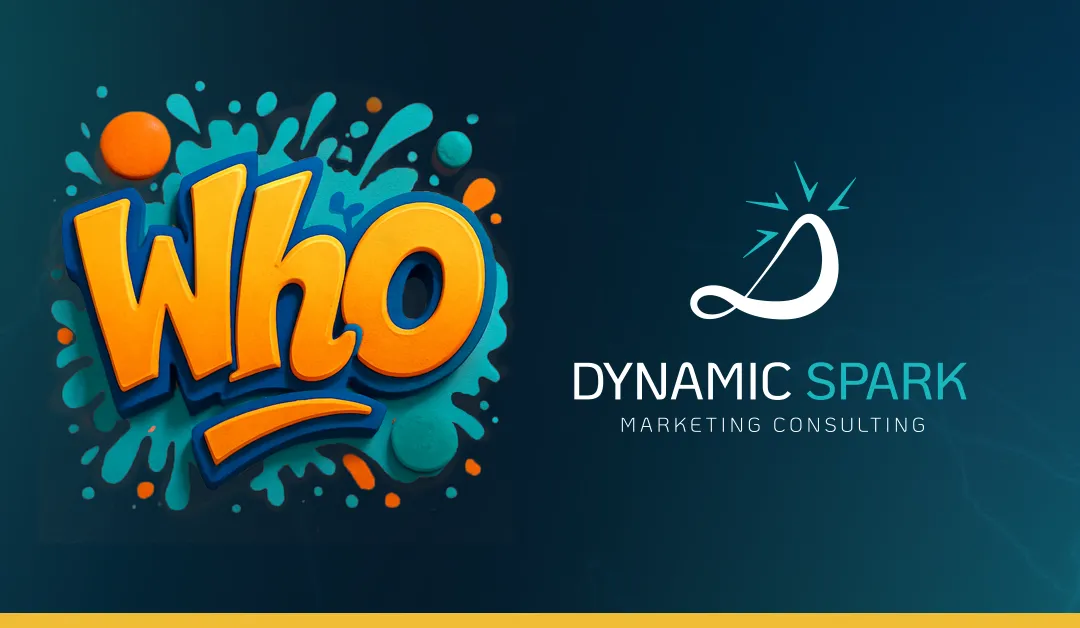
by Judah | Apr 26, 2025 | Content Marketing Tips, Marketing, Small Business Growth
What Can a 2000s Rapper Teach You About Marketing? More Than You Think!
Before I dive in, let’s get one thing straight: I am not endorsing Mike Jones’ music—unless, of course, you enjoy lyrics that make your grandma clutch her pearls. This post is strictly about marketing brilliance, not questionable life choices.
Ok, let’s talk about Mike Jones. Who? Mike Jones.
No, not your neighbor. Not your accountant. THE Mike Jones. The Houston rapper who, despite having the lyrical depth of a kiddie pool, somehow made his name unforgettable.
I mean, I’ve been dating my girlfriend for several years now, and I still don’t know her phone number. But if you ask me right now for Mike Jones’ digits, I’ll drop 281-330-8004 faster than you can say “flip phone.”
What Made Mike Jones Unforgettable? Repetition.
Mike Jones had a marketing strategy so simple yet so effective it should be in textbooks. He repeated his name and phone number so many times in his songs that it became impossible to forget.
It’s the same reason why jingles like “Nationwide is on your side” or “I’m lovin’ it” are burned into your brain forever. Repetition = brand recognition.
Your Business Needs a “Mike Jones” Moment
If people don’t remember who you are or what you do, it’s not because they’re dumb—it’s because you haven’t told them enough times.
Think about it:
-
- You post on social media once and expect people to remember your business? Nope.
- You introduce your brand once and assume clients will call? Think again.
- You explain your services once and think they get it? Spoiler alert: They don’t.
In marketing, it takes an average of 8-12 touchpoints before a customer makes a purchase. (And let’s be honest—if Mike Jones had only said his name once, we wouldn’t be having this conversation.)
How to Be More Like Mike (Marketing Edition)
1. Repeat Your Core Message
What do you do? Who do you help? Say it. Then say it again. Then say it when people are sick of hearing it. That’s when they finally start remembering.
2. Be Easy to Remember
Mike Jones didn’t go by Michael Q. Jones, CPA—he kept it simple. Your brand messaging should be just as catchy. A memorable tagline, slogan, or value statement goes a long way.
3. Make It Easy to Find You
Mike Jones literally gave out his phone number in every song. Are you hiding behind an outdated contact form and a website that loads slower than dial-up. Fix that.
4. Be Consistent Across Platforms
Mike Jones didn’t switch it up—same name, same number, every time. If your brand voice sounds different on Instagram, LinkedIn, and your website, you’re confusing people. Keep it consistent.
5. Show Up More Often Than You Think You Need To
Mike Jones didn’t just mention his name once per album—he said it in every song. You need to show up regularly in front of your audience through blogs, social media, and email marketing.
Final Thought: Will People Remember You?
Mike Jones turned a simple marketing strategy into a lasting legacy (and let’s be honest—he did it without Facebook ads, SEO, or Google Analytics).
So, here’s the real question: If a 2000s rapper can make millions of people remember his name and phone number, what’s stopping your business from being unforgettable?
Want to keep your marketing on point? Subscribe to my newsletter (Or just refresh the page and fill out the info in the popup :).
Need help crafting a brand people won’t forget? Let’s talk.
Now go forth and channel your inner Mike Jones—minus the questionable lyrics.

by Judah | Mar 26, 2025 | Digital Marketing Strategies, Lead Generation & Nurturing, SEO & Online Visibility, Small Business Growth, Web Design & Development, Website Maintenance & Optimization
So, you’re thinking about building your own website. How hard can it be? It’s like cutting your own hair—you can do it, but you might not want to show anyone the results.
DIY website builders promise you’ll have a site up in minutes. Just drag, drop, and poof—you’re the next digital entrepreneur. But here’s the problem: looking “done” and looking professional are two very different things.
Meanwhile, a professionally designed website isn’t just there to look pretty. It’s a 24/7 sales rep, working to convert visitors into customers while you sleep. So, let’s break down the real difference between a DIY site and one built by someone who actually knows what they’re doing.
1. First Impressions: Is Your Website Scaring Away Customers?
Your website has about 3 seconds to impress visitors before they leave faster than a cat avoiding bath time.
DIY Website Struggles:
❌ Generic templates that make your site blend into a sea of mediocrity
❌ Confusing layouts where visitors have no clue where to click
❌ Font choices that scream “designed by my cousin who took a graphic design class in 2008.”
What a Pro Designer Does:
✔ Creates a custom, on-brand design that makes you look legit
✔ Optimizes layout and visuals to keep visitors engaged
✔ Designs for mobile first (because over 60% of your traffic is coming from phones)
The Hidden Cost of DIY Websites: If your site looks unprofessional, people assume your business is, too. That means lost trust, lost credibility, and lost sales.
2. SEO: Can Google Even Find Your Site, Bro?
If your website exists but isn’t ranking on Google, does it even exist?
DIY SEO Nightmares:
🔍 Slow loading speeds—Google hates slow sites, and so does everyone else
🔍 No keyword strategy—just hoping people “stumble upon” your site
🔍 No mobile optimization—Fun fact: Google ranks mobile-friendly sites higher
What a Pro Designer Does:
✔ Improves page speed so visitors (and Google) stick around
✔ Optimizes for the right keywords so you actually show up in search results
✔ Builds a mobile-first site to help improve user-experience
Hidden Cost of DIY: If Google doesn’t rank your site, your competitors are stealing your traffic.
3. User Experience: Is Your Site Annoying People?
Nothing says untrustworthy business like a broken contact form or a checkout page that mysteriously deletes everything right before purchase.
DIY Website Fails:
🤦 Links that go nowhere or worse, to an error page
🤦 No clear call-to-action so visitors leave without taking action
🤦 Navigation so confusing that users need a map and compass
What a Pro Designer Does:
✔ Ensures everything actually works (crazy concept, right?)
✔ Guides visitors toward taking action (like booking a call or buying a product)
✔ Makes navigation smooth & intuitive (so people don’t rage-quit)
Hidden Cost of DIY: If users can’t easily navigate your site, they’ll leave. And guess what? They’re not coming back.
4. Security & Maintenance: Hackers Love DIY Websites
Think hackers only go after big companies? False. Small business websites get hacked every day because they often lack basic security.
DIY Website Weaknesses:
🔓 No regular updates or security patches
🔓 Weak protection against malware and cyberattacks
🔓 No backups—so if something breaks, good luck
What a Pro Designer Does:
✔ Sets up proper security measures to keep your site safe
✔ Monitors & updates regularly with a Website Support Plan so you don’t have to
✔ Ensures your site gets backed up—because disasters happen
Hidden Cost of DIY: If your site gets hacked, you could lose business, credibility, and SEO rankings overnight.
5. Lead Generation: Is Your Website Just Sitting There?
Your website shouldn’t just sit around looking pretty—it should be bringing in leads and sales.
DIY Lead Gen Fails:
❌ No clear call to action—so visitors leave without converting
❌ No trust-building elements—so visitors lack reassurance you’re legit
❌ No lead capture system—so you’re missing out on potential customers
What a Pro Designer Does:
✔ Creates clear, action-driven pages that turn visitors into buyers
✔ Uses social proof & credibility markers like testimonials and case studies
✔ Builds in lead capture tools to grow your email list & customer base
Hidden Cost of DIY: If your website isn’t converting visitors, you’re leaving money on the table.
The Real Cost of a DIY Website vs. a Professional Site
Let’s break it down:
💻 DIY Website:
✔ Cheaper upfront (woohoo!)
✔ You get full control (even if you don’t know what you’re doing)
❌ Looks generic
❌ Ranks poorly on Google
❌ Frustrates visitors (who leave without buying)
❌ Vulnerable to security risks
❌ Ends up costing you more in lost sales
🚀 Professional Website:
❌ Costs more upfront
❌ Limited control on how to build or make changes
✔ Designed to convert visitors into customers
✔ SEO-friendly (so people actually find you)
✔ Loads fast, works seamlessly, and builds trust
✔ Saves you time, stress, and lost revenue
✔ Is an investment in your business growth
The Verdict: DIY or Pro?
You can build your own website—just like you can fix your own plumbing. But when your DIY project ends up costing you more time, money, and customers… was it really worth it?
If you’re ready to invest in a website that actually works, let’s talk.
Contact us today!
Or… you could spend the next three weekends Googling “why does my website look weird on mobile?”
Your call. 😉
